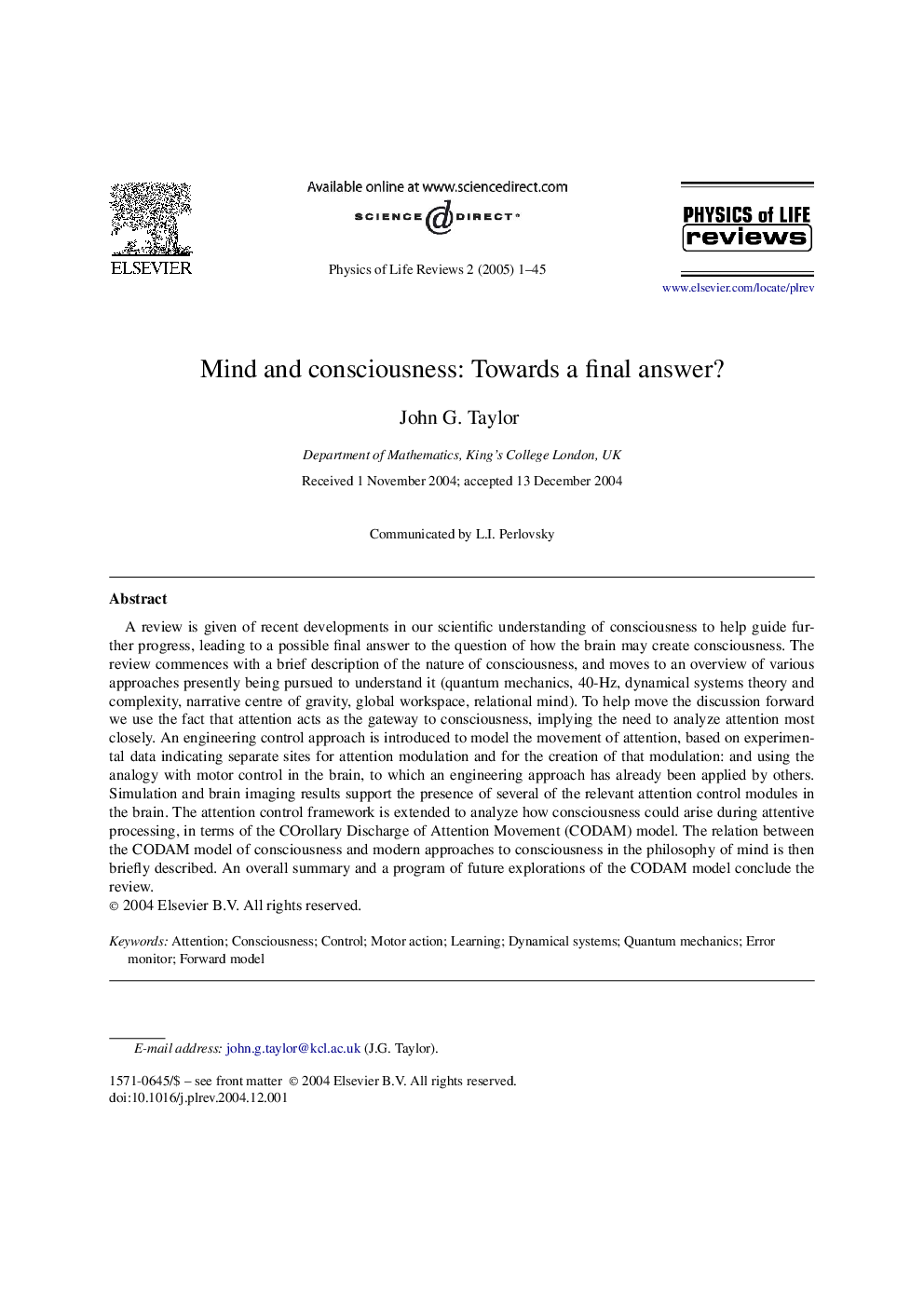| Article ID | Journal | Published Year | Pages | File Type |
|---|---|---|---|---|
| 9871275 | Physics of Life Reviews | 2005 | 45 Pages |
Abstract
A review is given of recent developments in our scientific understanding of consciousness to help guide further progress, leading to a possible final answer to the question of how the brain may create consciousness. The review commences with a brief description of the nature of consciousness, and moves to an overview of various approaches presently being pursued to understand it (quantum mechanics, 40-Hz, dynamical systems theory and complexity, narrative centre of gravity, global workspace, relational mind). To help move the discussion forward we use the fact that attention acts as the gateway to consciousness, implying the need to analyze attention most closely. An engineering control approach is introduced to model the movement of attention, based on experimental data indicating separate sites for attention modulation and for the creation of that modulation: and using the analogy with motor control in the brain, to which an engineering approach has already been applied by others. Simulation and brain imaging results support the presence of several of the relevant attention control modules in the brain. The attention control framework is extended to analyze how consciousness could arise during attentive processing, in terms of the COrollary Discharge of Attention Movement (CODAM) model. The relation between the CODAM model of consciousness and modern approaches to consciousness in the philosophy of mind is then briefly described. An overall summary and a program of future explorations of the CODAM model conclude the review.
Keywords
Related Topics
Physical Sciences and Engineering
Physics and Astronomy
Physics and Astronomy (General)
Authors
John G. Taylor,
